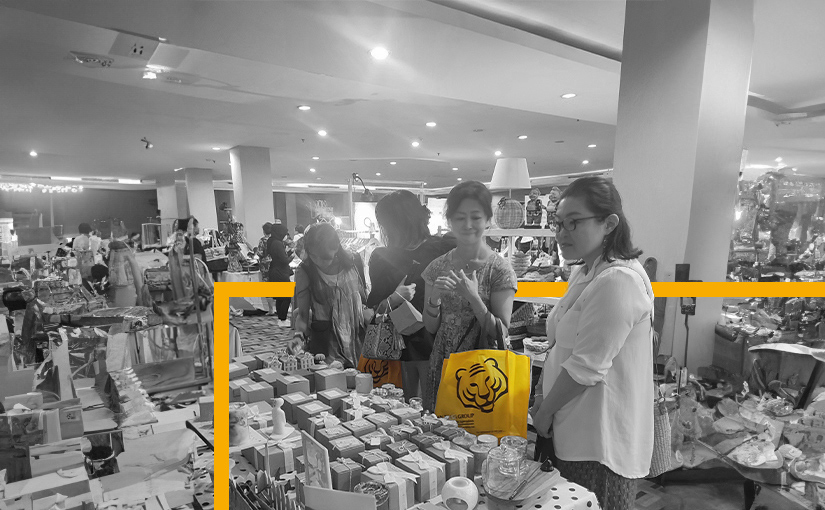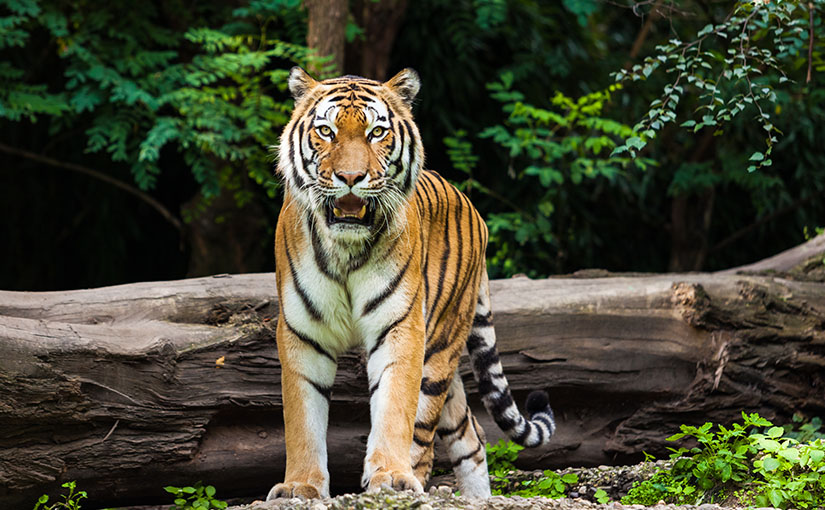Conservation Story 4: How Do Tiger Supporters Connect to Earth?
Conservation Story 4: How Do Tiger Supporters Connect to Earth?
9 Apr 2018
In celebration of Earth Hour that swept across twenty-four time zones and six continents on Saturday 24 March 8.30 PM, we ask supporters to share their personal stories on how they #connect2 Earth.
Read on to learn how a photographer, an ecology consultant, a mural artist and 11-year-old Olivia and Lisa, find their connection to nature through wild tigers.
RANJAN RAMCHANDANI – PHOTOGRAPHER
Ranjan Ramchandani
I feel truly blessed to have the opportunity to connect with the Earth in such a unique way. To capture its creatures’ most candid moments through a lens means breaking the barrier between technology and nature, without one having an adverse effect on the other. Now, more than ever, it is imperative that we as the human race, galvanize to protect this beautiful planet we’ve been gifted, and continue to enhance it without destroying it.
Through my photography, I aim to virtually bring my audience one step closer to the heart of nature, and through my safaris, I physically transport them to the wilderness to observe the ingenuous wild.
In practicing sustainable photography, I make my top priority a symbiotic relationship with my subject; my mantra is that this is their home, not mine, and I am a guest within it. I give preference to camps that use solar power, I make sure never to attract attention – whether that be with clothing or provisions – and most importantly, I make sure to support the local communities whose residence is alongside these animals.
My job is never to leave a footprint, merely to share the indescribable with the world. Whether it be a Cheetah, Kori Bustard or the great migration in its entirety, there is a beautiful yet untold story behind every picture printed, and the only way to hear it, is to interact with nature yourself.
REBECKA LE MOINE – ECOLOGY CONSULTANT
Shelley Burke
Rebecka Shelley Burke
Since my childhood, I have been in love with nature. I made it my task to always speak up for the ones who do not have a voice – the animals, the flowers, the bees… every single species matters. I wanted to protect each and every one of them, and the more I learned about them, the more responsible I felt. More than a feeling, it became something I am passionate about.
“Wherever I can make some kind of positive impact for nature conservation,” became the guiding words for me, leading me forward, into the dream I’m living now.
My name is Rebecka Le Moine, and I worked with tigers as part of my Master’s degree, in collaboration with WWF.
As an ecology consultant, I was interested to learn how protecting nature can benefit people like you and me. I travelled to Cambodia to carry out a research on my Master’s thesis “The potential of sustainable tourism in Cambodia” in collaboration with the WWF.
The government of Cambodia has ambitious plans of reintroducing wild tigers back to the country in the Eastern Plains Landscape. In Mondulkiri where my field work was based in, the population is small and the indigenous people have lived in the forests for generations.
This means that they have been living in harmony with nature for a long time, with a respect towards the jungles all inhabitants. Even the predators, such as tigers.
I interviewed tourists on their thoughts on the potential of tiger reintroduction to get insights from their perspective. If tiger reintroduction can be achieved with respect for the local community, in a way that let the tigers roam free in protected forests, it seems that the vast majority of the tourists and local people would support the endeavour.
HUA TUNAN – MURAL ARTIST
©Chen Yingiie
Nature has given me a lot of introspection. I use my brush to explore the delicate relationship between nature and the city, and hope to express through my art, the importance of having wildlife in our natural world.
Tigers, especially, inspire me deeply and is the often subject of my artwork. Being solitary animals, they are mysterious and majestic, and represent so much power and strength.
I am at present planning a Tiger art exhibition to bring awareness of how endangered tigers have become. Poaching and exploitation of natural resources have led to a serious degradation of the environment. With only around 3,900 wild tigers remaining in the world, tigers need our help now.
OLIVIA AND LISA
11-year-old Olivia and Lisa threw themselves into raising money for endangered animals.
Primary school students Olivia and Lisa couldn’t count the hours they spent making bracelets, keyrings and loom band creatures – but they said they were worth it.
Their school stall was a sell-out, raising $310 to help WWF protect the Bengal tiger, giant panda and Asian elephant. Olivia told us:
“We wanted to help, because we love animals so much. I love tigers, they’re really cool. When Lisa told me about WWF and how other people fundraise for them, I said ‘Sure!””
While Olivia was working on her rubber band animals, Lisa was making hundreds of colourful string bracelets. The girls also created posters and got other children in their class involved.
“I feel really happy that we raised as much money as we did. Animals are people too and we should all care for them. Hopefully this money could stop them from becoming extinct and give them what they really deserve.”
What difference do you want to make? Add to the conversation by sharing how you connect to nature using the hashtag #Connect2Earth!
Read more here. http://tigers.panda.org/news/how-do-tiger-supporters-connect-to-earth/









